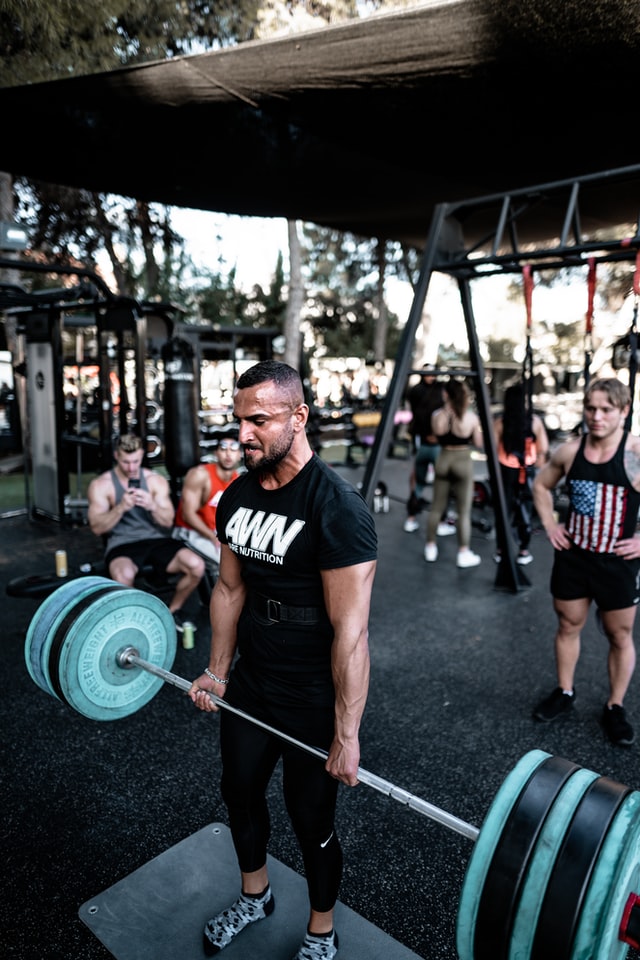Non-periodized strength training
Parallel to the previous models on periodized training, what has been called non-periodized strength training (ENP) is opposed. As stated in the referred article, not periodizing would mean that the entire training cycle is considered without changes that justify differentiating some moments from others, and therefore it would be “a single period”, in which “everything happens or is done the same way”: that is, the same load, the same stimulus, the same training is applied every day.
In this series of articles we deal with some of the most important concepts of strength training, collecting notes from the recently published book Strength, Speed and Physical and Sports Performance written by renowned researchers Juan José González Badillo and Juan Ribas Serna.
SUMMARY
- Non-periodized training is one in which the entire training cycle is considered without changes that justify differentiating some moments from others.
- “Non-periodized” training is impossible in practice, since if the absolute load changes, a situation will arise in which there will necessarily be a change, an increase or a decrease in the absolute intensity, that is, there will be a “variability of the load”, which is what is required of “periodization”.
In this type of training, “all types of variability” apparently disappear, which is why it is a model that “loses all the advantages” of the two previous ones. This type of training has generally been considered the ineffective “bad” model, precisely due to the lack of variability, although it partly has elements of the previous ones, because training “until muscular failure” continues.

However, it is likely that in many cases the effect of this type of training will also be positive or very positive, even if you try to “not periodize”.
An ideally “non-periodized” training could have many alternatives and all of them, inevitably, with true load changes, that is, violating “non-periodization”. It is proposed that the “periodized” occurs if there are changes in volume and intensity, with a tendency to increase intensity and decrease volume in the space of training time.
Therefore, if the relative intensity remains stable, the training “would not have been periodized”. These workouts are usually characterized by using, for example, a 3x8RM load throughout the training cycle, which would mean that the program is “not periodized” because the relative intensity is always the same: the intensity that represents the 8RM load .
But this is a contradiction, because if the subject always does 8RM, it is unlikely, practically impossible, that he is doing the training with the same absolute load all the time, and, therefore, if the absolute load changes, we would be in a situation in which there will necessarily be a change, an increase or a decrease in the absolute intensity, that is, there will be a “load variability”, which is what that is required of “periodization”.
if, despite increasing the absolute intensity, the relative intensity is maintained, this would be irrefutable proof that there is an improvement in performance in the trained exercise
Therefore, what happens if the relative intensity is maintained and the absolute intensity increases? Is there no “periodization”? That is, is there no load change? Of course there is, even if the contrary has been claimed. But, furthermore, if the relative intensity is maintained despite increasing the absolute intensity, this would be irrefutable proof that there is an improvement in performance in the trained exercise.
Which would indicate that the “non-periodized” program has had a very positive effect. Therefore, “non-periodized” training is impossible in practice, and in some cases maintaining the relative intensity, and even tending to reduce it (here there would be apparently “negative” variability), may be the best indicator of a positive effect. of training.

On the other hand, if all the subjects are training with the same XRM, it is very unlikely that they will all train with the same approximate relative load (percentage of the RM), since there can be very noticeable differences between the subjects in relation to the number of repetitions that they can perform with the same relative load (González-Badillo et al., 2017).
This problem would apply to all other “periodized” training where loading in the form of XRM is applied, that is, practically all of them. Training (periodization) by blocks Apart from what has been commented in the section on the historical review, the periodized model mentioned above, with its corresponding phases, is also considered in some cases as “training by blocks”. Given that this model has already been discussed, now the one related to Verkhochansky’s proposal, which consists of two large “blocks”, is discussed a little more.
Verkhochansky’s proposal on block training
According to this author’s proposal, the first block is performed with power strength exercises, the volume is high, adjusted to the subject’s experience, the intensity is medium, the execution of technical exercises is not recommended during the 6-12 weeks that This block lasts and there is a tendency to lose performance in high-speed actions, which is identified with loss of “explosive force”.
The second block can also have a duration of 6-12 weeks, although two consecutive blocks do not necessarily have to be of the same length. It uses exercises closer to the competition or specific exercises, in which naturally, the competition exercise technique is included, the volume is reduced and the gradually increase the intensity (assumed to be in other “non-strength” exercises), and, as a consequence, it is “expected” to produce an increase in “explosive strength” greater than what the subject had before starting the first block.
It is even proposed that the greater the performance loss during the first “block”, the greater the positive effect in the second.
the first block is performed with power strength exercises, the volume is high, adjusted to the subject’s experience, the intensity is medium
The first observation is that the absence of technical training for practically half of each training period does not seem the most advisable.
The specific training is the most important in the preparation of any athlete, and the abandonment of the technical execution is done due to the possible interference of the strength training itself on the technique for a long time, it can have negative effects on it and the specific performance. In addition, the non-recommendation of the technical execution is made due to the possible interference of the strength training itself on the technique.
This situation should not occur, since strength training should have such characteristics that it does not interfere with any other type of training, and even less with technique. As will be seen later, most of the problems with any of the approaches arise from inadequate strength training.
The performance loss, acceptable and considered unavoidable and even desirable during the first block, risks being excessive, so it is questionable whether an increase in performance is ensured in the subsequent block. As is known, and has been stated in previous notes: greater fatigue does not guarantee greater performance.

The fatigue-performance relationship is curvilinear, and in the shape of an inverted “U”. In addition, there is no explanation to justify that it is positive that for as long as 2-3 months there must be a permanent state of performance loss in order to improve afterwards.
Another questionable aspect is the abandonment of strength training during the second block. It is not possible for “power/performance” to improve during the second block if the subject loses strength. Neither strength training nor technique training should be abandoned at any time.
What could partially “save” this situation is that by performing the “technical training”, typical of the second block, strength is necessarily trained, even if it is not included in the designed program or one does not think that one is training. The proposal that a “strength-power” training be applied in the first cycle does not make sense, because it is not possible for power to improve without improving strength (force applied to any load and exercise with which it is intended to estimate the power).
The proposal that “strength-power” training be applied in the first cycle does not make sense, because it is not possible to improve power without improving strength.
Actually, “power” training does not exist, although it has already appeared in many of the models analyzed and will continue to appear.
Finally, if the minimum time to complete and obtain the benefits of this type of training model goes to 16-18 weeks, with approximately half or more of the training time in the declining phase of performance, the range is greatly reduced. of sports specialties to which it could be applied.
Less applicable the higher the frequency of competitions. In addition, a high strength training load, especially due to the training volume typical of the first block, would probably not be applicable to any sport specialty, much less to those that do not have high maximum strength needs (1RM values).





